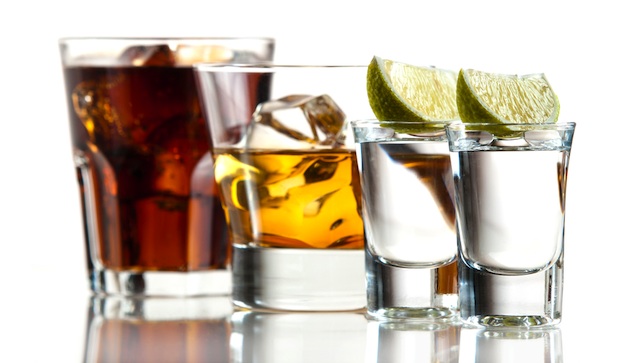Guys, guard your six-pack—of beer, that is. New research shows that alcoholic beverages are as much of a calorie culprit as soft drinks, turning the fight against obesity to booze.
In a report released by the Centers for Disease Control and Prevention yesterday, researchers found that the US adult population drinks an average of 100 calories per day from alcoholic beverages.* That’s just as many calories as someone gets from drinking a soda each day.
The report included data among adults ages 20 and older from 2007 to 2010. They found that on any given day, one-third of men and 18 percent of women get their calories from alcoholic beverages. Men tend to consume about 100 more calories than women, with beer being their top drink. Wine is typically women’s drink of choice.
For an idea of how much alcohol that is, one 12-ounce can of beer is approximately 150 calories, a five-ounce glass of wine is about 120 calories, and a 1.5-ounce of liquor contains 100 calories.
As expected, younger adults consume more alcohol than older age groups. In some cases, men consume 174 calories from alcohol a day, which is more than is typically found in a can of soda. Still, on a given day, consumers of alcoholic beverages across all age groups get about 16 percent of their total caloric intake from alcoholic beverages, researchers wrote.
On the other hand, the amount of calories consumed from beer, liquor, and wine did not significantly differ by race and ethnicity. There was, however, a noticeable difference among income level. Those who live 350 percent above the poverty level get 117 calories from alcoholic beverages a day, whereas those living at or below the poverty level get about 90 calories from alcohol. Among men, no big differences by income were found in average calories consumed from alcohol.
Researchers wrote that while the health effects of consuming alcohol are well known, data regarding calorie intake from drinking has been lacking. “As with calorically sweetened beverages, alcoholic beverages are a top contributor to caloric intake but provide few nutrients,” they said.
Does this mean city governments will move to ban large alcohol servings like they have with sodas? We can’t be sure, but in the meantime we’ll keep telling ourselves that a glass of red wine at the end of every day couldn’t hurt.
Download the full report at the CDC’s website.
*This article has been updated from a previous version.



















